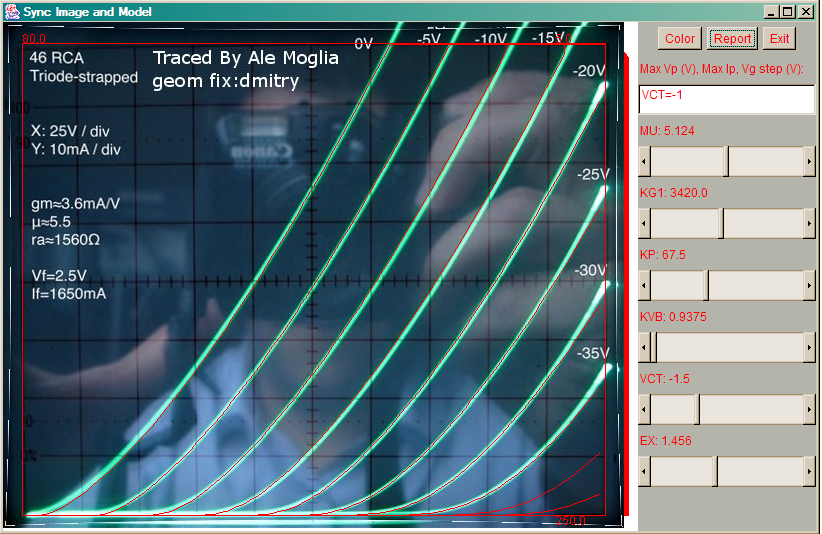Finishing the curve tracer
Today I did a bit of extra work on the curve tracer with a view of finishing it. It has been a long and painful journey, but I’m reaching the end of it.
The transconductance tester is working perfect. I need to use the following ranges in my true RMS AC voltmeter:
- 0-2,000 μmho: 100mVrms scale
- 2,000μmho-50,0000μmho: 1Vrms scale
It’s probably the DC bias which affects the low scale. As an example when testing a 46 in triode mode (see datasheet for details), I tried the following operating point: Vg=-33V, Ia=22mA and the measure should be around 2.35 mVrms over 220mVdc. But in my bench voltmeter, above 17mA in the 46 doesn’t like it and cannot measure it, so need to change scale. I tested low transconductance valves in the lower AC scale such as CX301a, 26, 4P1L, 71a and then using the high AC scale, used 6e5P, 6C45, 6N6P amongst others.
The tracer now has a common-mode mains filter. This was required as at certain times during the day, specially in the evenings when the mains is really noise or my wife is using the microwave oven!, when tracing curves with the 1Ω sensing resistor and low anode currents (e.g. CX301a) then the noise level was sufficient to impact and distort the traced image. With the common-mode mains filter it works brilliantly.
Now need to place bottom plate and standing feet. Job done then and will move to some proper audio work!
Testing the circuit today, I measured 29 46 valves. Ended up discarding two which measured low and then when tested with the tracer found that curves weren’t good at all. Probably electrode misalignment as they weren’t just with low transconductance. Will upload some examples as it’s very interesting to see the difference





























